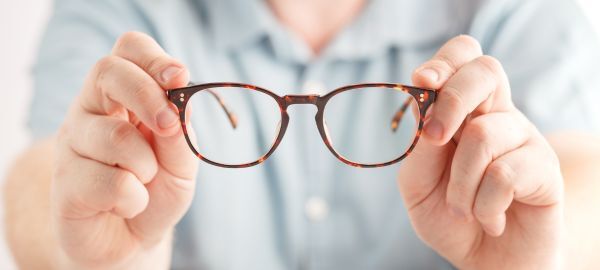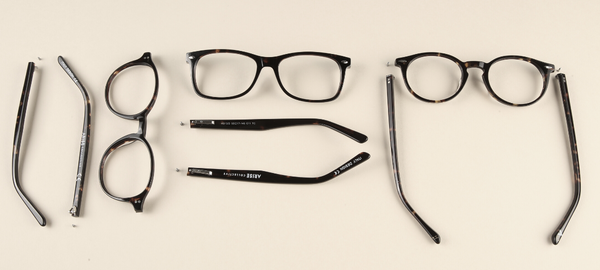How to Measure Your Face for Glasses Frames

Reviewed by
Beck Jinnette
The second most important thing – the first is, of course, having an up-to-date, accurate eye prescription! – when getting a new pair of glasses online is knowing the right frame size for your face.
Fortunately, measuring your face for glasses frames is something you can easily do at home.
With a few simple steps, you can determine your bridge width, frame width, temple length, type of face shape, and pupillary distance. We’ll show you how in this article.
How to measure for glasses at home
There are many different glasses parts, and because of this, glasses sizes depend on specific glasses measurements like bridge measurement and lens width.
The S, M, L, and XL sizes correspond to a range that these specific measurements fall into.
To get started, you’ll need a mirror, a ruler with millimeter (mm) measurements – even better if it’s a flexible tape measure – and maybe a friend to help ensure accuracy.
Follow these steps to make sure you get a perfect fit.
Frame width
The frame width is the total horizontal length of the glasses.
To find this, measure the distance between your temples by looking in the mirror and placing the ruler directly over your face, above your brow, as shown below.
Record all the measurements in millimeters.
Ang glasses frame should sit comfortably on your face, with the edges aligning with the widest part of your face, not extending beyond.
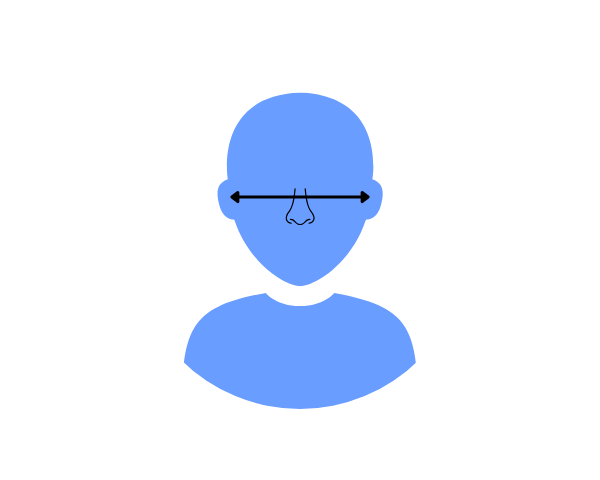
Bridge width
The bridge of the glasses is the little piece that goes over your nose to connect the two lenses. So, the bridge width is the distance between one lens and the other.
As demonstrated below, you can measure this by looking in the mirror and placing the ruler between your eyes just above the nose.
Remember that glasses can vary in bridge width and position.
For example, if you have a high nose bridge, go for glasses with a brow-level bridge.
This is crucial for comfort, as a too-tight bridge can cause pressure, while a bridge that’s too loose may result in the glasses slipping down your nose
The bridge width usually ranges from 15 to 25 mm.

Lens width
The lens width is not strictly necessary, but if you need it, you can calculate it by subtracting 6 mm plus your bridge width from the total frame width.
For example, if your frame width measures 132 mm and your bridge width is 19 mm, calculate 132-6-19 = 107 mm.
Then divide this number by 2 (because the frame has two lenses). 107/2 = 53.5 mm is the width of one single lens.
The lens width usually ranges from 40 to 60 mm.
Temple length
Temple length or arm length refers to the arms of the glasses. The correct length ensures that the glasses fit comfortably over your ears.
Measure from the edge of your eyebrow all the way around your ear, to where you want the tip of the glasses temple to reach, as demonstrated in the image below.
Most temples have a bend to hook over the ears, so ensure the length you choose accommodates this curve for a snug fit.
Overall, the wider your total frame width, the longer your temples need to be.
For example, If you have a wider frame width, choose frames with arms 145 millimeters or more in length.
For those with smaller frame widths, select glasses with a 135-140-millimeter arm.
The temple length usually ranges from 128 to 155 mm.
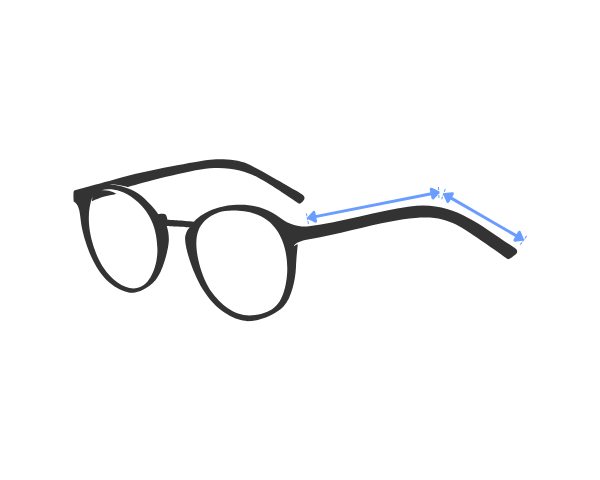
Face shape
Understanding your face shape is another key to selecting frames that complement your features.
Face shapes are broadly categorized as round, oval, square, heart, or diamond.
You can follow our guidelines to determine your face shape and make the most flattering choice!
DID YOU KNOW?
Your skin tone, eye color, and hair color also impact how glasses look on you, not just your face shape. Warm tones shine with gold frames, while cool tones suit silver. Matching these elements can transform a good fit into a great style.
Your pupillary distance
Pupillary distance (PD) is the space between your eyes’ pupils. This is essential for ensuring the prescription in your lenses is incorporated correctly, providing optimal focus.
You can measure this by following these few easy steps in our how to get your PD page.
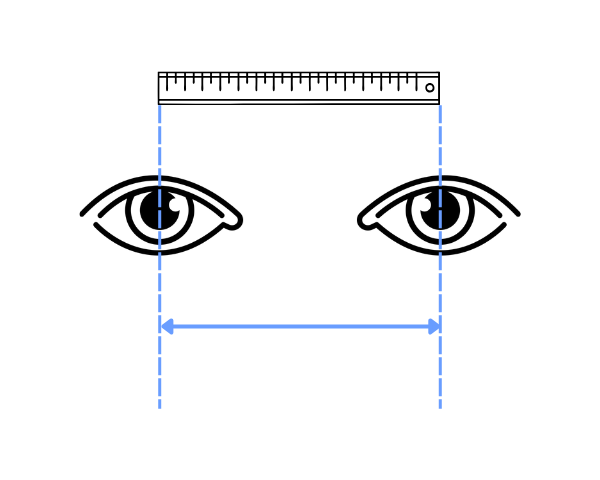
More tips
Now that you have the most important frame measurements from your face, you can refer to our glasses size table to find the perfect size for your new glasses.
Here are also a few extra tips for optimal measuring:
- When measuring, always look straight ahead into a mirror.
- Use a flexible tape measure for curved measurements.
- Consider the frame material and weight for overall comfort.
- Remember, comfort is as important as style. Ensure the frames don’t pinch your nose or press behind your ears.
- Don’t forget to update your prescription. Even the best-measured frames need the correct lenses to match.
For any doubts and questions, please contact our certified in-house opticians for guidance and advice.
Related articles
